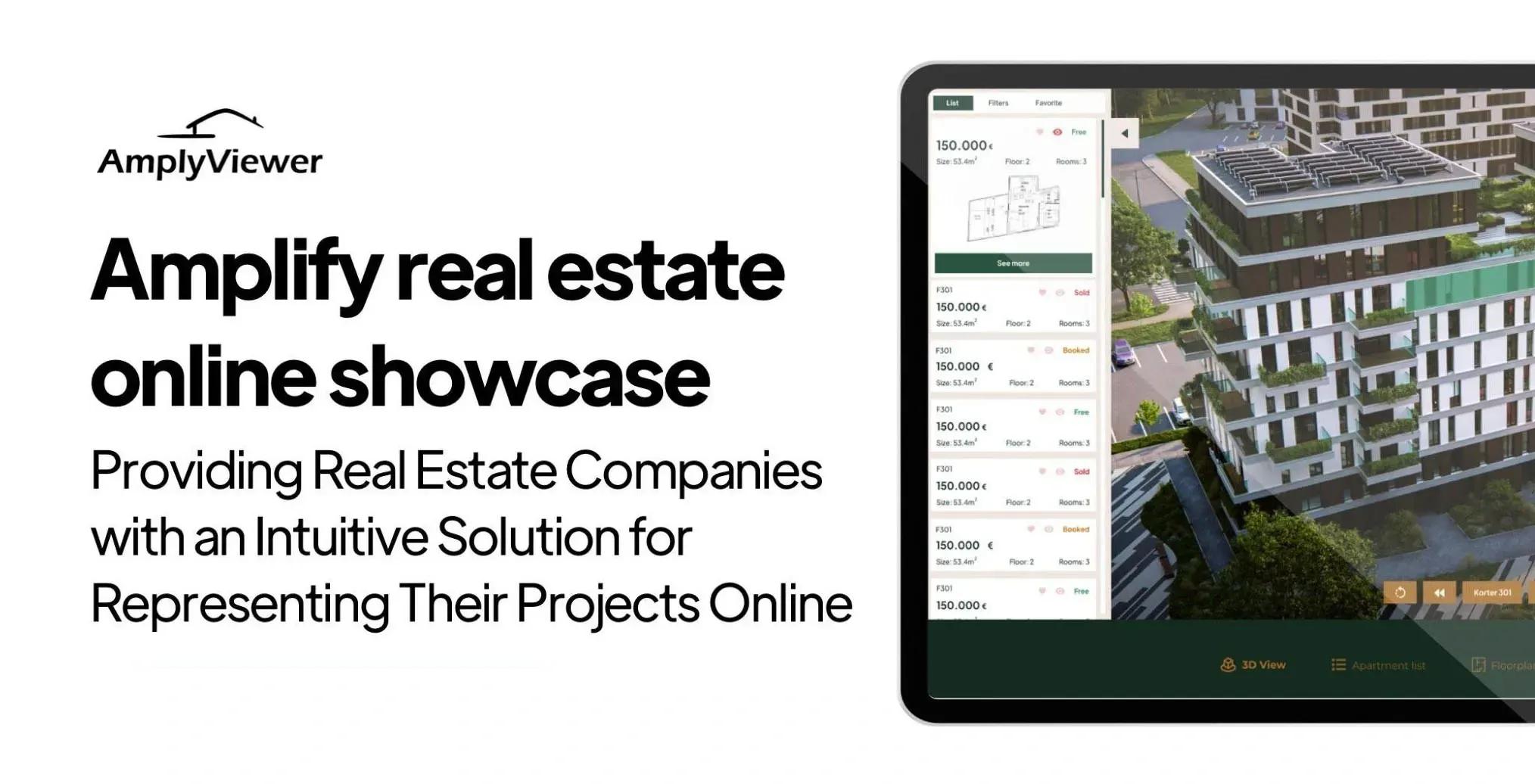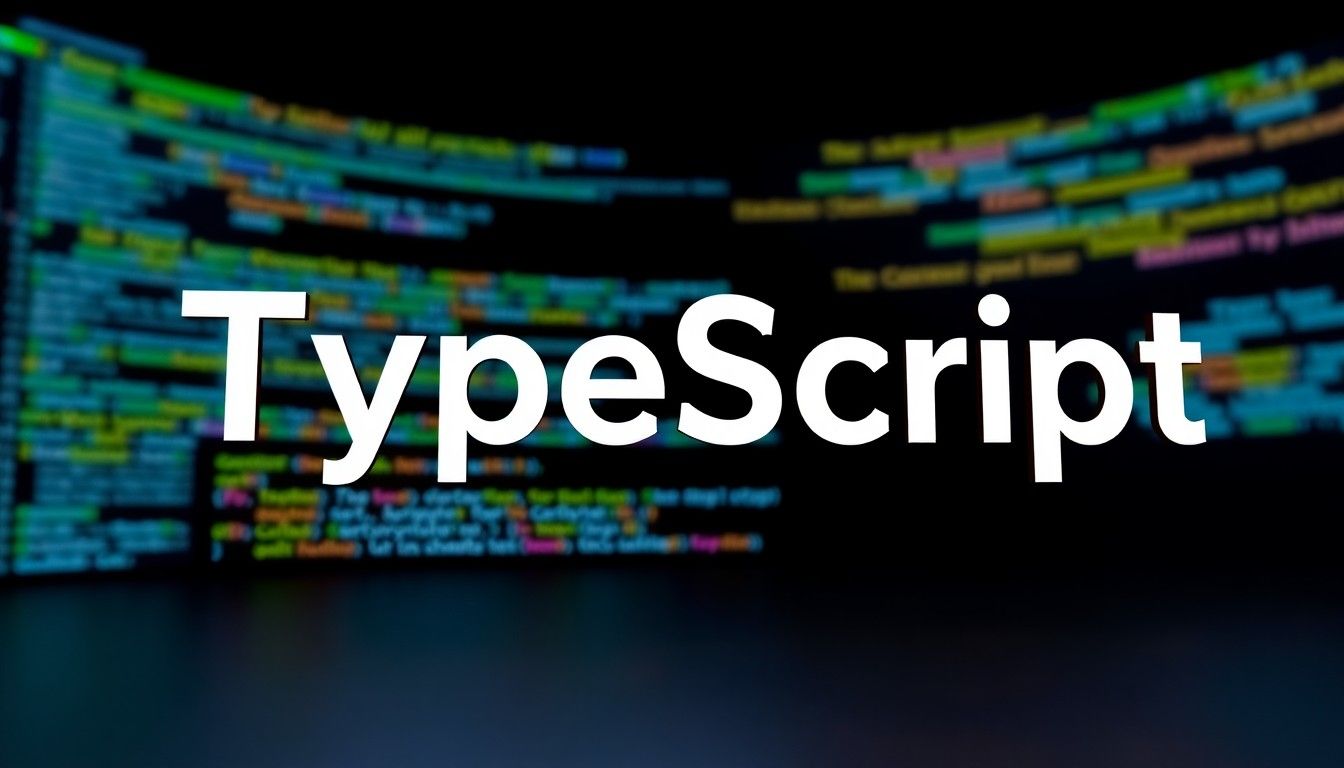Real Estate 3D Rendering Services: Boost Property Sales in 2025

Property visualization is undergoing a revolutionary transformation. The global 3D rendering market is set to explode from $2.27 billion in 2022 to $9.58 billion by 2030 (Source: Fortune Business Insights). For real estate professionals, this surge represents an unprecedented opportunity to transform property presentations and accelerate sales.
Real estate 3D visualization services are revolutionizing how properties are marketed, viewed, and sold. Whether you're showcasing luxury apartments or marketing renovation projects, 3D rendering technology offers practical solutions that can significantly impact your bottom line.
This guide reveals seven proven strategies to leverage 3D rendering services for boosting property sales in 2025, backed by market research and real-world applications. From virtual staging to immersive property tours, you'll discover how to implement these techniques effectively while maximizing your return on investment.
The Evolution of Real Estate Visualization
The real estate visualization landscape is experiencing a dramatic shift. By 2025, the 3D rendering industry will reach a remarkable $5.01 billion (Source: Research Nester). This growth isn't just about impressive numbers – it's about transforming how properties are presented and sold in the digital age.
Traditional property marketing methods – static photos, basic floor plans, and physical staging – are making way for more dynamic, interactive experiences. This shift addresses a crucial challenge in real estate: helping buyers visualize their future in a space they've yet to visit physically.
Digital visualization trends show that buyers now expect more than just pictures. They want to experience properties virtually, understand spatial relationships, and see the potential of spaces before scheduling in-person visits. This evolution in buyer expectations is driving the adoption of 3D rendering services across all property segments.
The transformation is particularly evident in three key areas:
- Pre-construction Marketing: Developers can now sell properties months before breaking ground, using photorealistic renderings to showcase future developments
- Virtual Staging: Properties can be digitally furnished and decorated at a fraction of the cost of physical staging
- Remote Viewing: Detailed 3D tours enable out-of-area buyers to make confident purchasing decisions
For real estate professionals, this evolution presents both opportunities and challenges. While the technology offers powerful new ways to showcase properties, it also requires understanding how to effectively implement these tools within existing marketing strategies. The key lies in selecting the right visualization approaches that align with your property portfolio and target market.

Seven Powerful Ways 3D Rendering Boosts Property Sales
1. Transform Vacant Properties into Lived-in Spaces
Empty properties often struggle to create emotional connections with potential buyers. 3D rendering technology solves this challenge by breathing life into vacant spaces, helping buyers envision their future home without the substantial investment in physical staging.
Properties marketed through 3D rendering techniques sell significantly faster, thanks to the immersive and interactive experiences they provide (Source: Bella Staging). This acceleration in sales velocity comes from three key advantages:
- Emotional Connection: Furnished and decorated 3D renderings help buyers form immediate emotional connections with properties
- Style Versatility: Multiple design schemes can be created for the same space, appealing to different buyer preferences
- Cost-Effective Staging: Virtual staging eliminates the need for furniture rental, transportation, and physical setup
The transformation process involves more than just adding furniture to empty rooms. Professional 3D rendering services create complete lifestyle environments that showcase:
- Optimal furniture placement and traffic flow
- Thoughtful decor that enhances architectural features
- Proper scaling to demonstrate true space potential
- Lighting scenarios that highlight property features
Real estate professionals can leverage this technology to present properties in their best light while maintaining complete control over the staging process. Unlike physical staging, virtual renderings can be quickly adjusted based on feedback or market preferences, providing unprecedented flexibility in property presentation.
The practical implementation involves capturing high-quality base photos or architectural plans, then working with visualization experts to create photorealistic rendered images. These can be used across all marketing channels, from property listings to social media campaigns, ensuring consistent, professional property presentation.
2. Accelerate Sales Cycles with Photorealistic Renderings
Photorealistic 3D renderings have revolutionized the property sales process by providing detailed, accurate representations that captivate buyers from their first interaction. This enhanced visualization capability significantly increases the chances of selling properties faster (Source: Research Nester).
High-end property marketing particularly benefits from photorealistic renderings through:
Traditional Photography:
- Limited by existing conditions
- Weather-dependent shooting
- Fixed viewpoints
- Time-consuming reshoots
Photorealistic 3D Rendering:
- Shows optimal potential
- Perfect conditions every time
- Unlimited perspective options
- Quick digital adjustments
The acceleration of sales cycles occurs through several key mechanisms:
- Immediate Visual Impact: Photorealistic renderings create powerful first impressions that drive buyer interest
- Detailed Property Understanding: Buyers gain comprehensive property knowledge before physical visits
- Reduced Decision-Making Time: Clear visualization helps buyers make confident decisions faster
- Enhanced Marketing Materials: High-quality renderings improve the effectiveness of all marketing channels
Implementation requires attention to several critical factors to ensure maximum impact:
First, focus on lighting and material quality - these elements make the difference between a good rendering and a great one. Professional rendering services understand how to manipulate these elements to create images that rival professional photography.
Second, maintain consistency across all rendered images to build trust with potential buyers. This includes accurate color representation, proper scaling, and realistic environmental effects that match your property's location and characteristics.
Finally, integrate these renderings strategically across your marketing funnel, from initial property listings to detailed property brochures and virtual tours. This consistent visual storytelling helps maintain buyer interest throughout the sales process.
3. Optimize Resource Allocation
Smart resource management is transforming real estate marketing, with 3D rendering leading the charge. The market's robust growth rate of 20.0% CAGR reflects the industry's shift toward more efficient visualization solutions (Source: The Business Research Company).
Strategic resource allocation through 3D rendering delivers substantial benefits in three key areas:
- Financial Efficiency:
- Elimination of physical staging costs
- Reduced photography expenses
- Lower marketing material revision costs
- Time Management:
- Faster property preparation
- Immediate availability of marketing materials
- Quicker response to market feedback
- Resource Flexibility:
- Multiple design variations from one base model
- Easy updates and modifications
- Scalable marketing assets
The cost-benefit analysis reveals significant advantages over traditional methods:
Initial Setup
- Traditional Method: High (furniture, decor, labor)
- 3D Rendering Solution: Moderate (one-time modeling)
Modifications
- Traditional Method: Expensive and time-consuming
- 3D Rendering Solution: Quick and cost-effective
Long-term Usage
- Traditional Method: Limited by physical constraints
- 3D Rendering Solution: Unlimited digital applications
Practical implementation strategies include:
Start with a comprehensive property assessment to identify which spaces will benefit most from 3D rendering. Focus initial investments on high-impact areas that traditionally require significant staging resources.
Create a digital asset library of rendered spaces and elements that can be reused and modified for different properties or marketing campaigns. This approach builds long-term value while reducing per-project costs.
Integrate 3D rendering services with existing marketing workflows to maximize efficiency. This might include establishing standard processes for requesting renders, managing revisions, and distributing final assets across marketing channels.

💻 Let us help you create a stunning online showcase for your projects that works seamlessly across all devices. Ready to amplify your real estate business? 👉 Explore AmplyViewer now
4. Build Buyer Trust Through Visual Clarity
Clear, accurate property visualization directly impacts buyer confidence and decision-making. 3D visualization helps connect with buyers on an emotional level, significantly increasing the chances of selling properties faster (Source: ArchiCGI).
Standing out in real estate requires building trust through transparency. High-quality 3D renderings achieve this by:
- Accurate Spatial Representation:
- True-to-scale room dimensions
- Precise furniture placement
- Realistic lighting conditions
- Complete Property Understanding:
- Multiple viewing angles
- Detailed material finishes
- Clear space relationships
Trust-building elements in 3D rendering focus on three core aspects:
Transparency in Presentation: Every detail matters when building buyer confidence. Professional 3D renderings showcase properties with photorealistic accuracy, from the way natural light falls across a room to the texture of flooring materials. This level of detail helps buyers make informed decisions based on accurate representations.
Consistency Across Materials: When buyers see the same high-quality visualization across all marketing materials - from brochures to virtual tours - it reinforces their confidence in the property and the selling organization. This consistent visual narrative builds credibility throughout the buying journey.
Interactive Engagement: Modern 3D rendering services allow buyers to explore properties at their own pace. They can zoom in on specific features, view rooms from different angles, and even experiment with different design options. This level of interaction creates a sense of ownership and investment in the property before purchase.
To maximize trust-building potential:
- Ensure all renderings maintain professional quality standards
- Provide detailed property information alongside visual elements
- Offer multiple viewing options for key spaces
- Include context views showing property relationship to surroundings
The impact of visual clarity extends beyond initial property viewing. When buyers feel confident about their understanding of a property, they're more likely to move forward with offers and complete transactions more quickly. This confidence stems from feeling fully informed about their potential investment.
5. Capture Remote Buyer Interest
The ability to attract and engage remote buyers has become crucial in modern real estate. Properties showcased through interactive 3D rendering experiences generate significantly higher engagement rates from remote buyers (Source: Fortune Business Insights).
Digital marketing trends show that remote property viewing capabilities are no longer just a convenience—they're an expectation. Here's how 3D rendering services maximize remote buyer engagement:
Comprehensive Virtual Experiences
- 360-degree property views
- Interactive floor plan navigation
- Detailed zoom capabilities for specific features
- Time-of-day lighting simulations
The key to capturing remote buyer interest lies in creating an experience that's as close to an in-person viewing as possible. Professional 3D rendering services achieve this through:
Immersive Property Presentation: Remote buyers can explore every corner of the property at their own pace. This self-directed exploration creates a sense of ownership and connection that traditional photos simply can't match.
Detailed Feature Showcase: High-resolution renderings allow buyers to examine specific features in detail, from cabinet finishes to window treatments. This level of detail helps remote buyers make confident decisions without physical visits.
Context and Location Understanding: 3D renderings can include surrounding views and neighborhood context, helping remote buyers understand the property's location and environment.
Implementation strategies for remote buyer engagement:
Virtual Walk-throughs
- Benefit: Natural property exploration
- Implementation: Interactive 3D tour integration
Measurement Tools
- Benefit: Accurate space planning
- Implementation: Digital measuring capabilities
Design Variations
- Benefit: Personalization options
- Implementation: Multiple finish/style options
To maximize remote buyer engagement:
First, ensure your 3D renderings are optimized for various devices and platforms. Remote buyers should have a seamless experience whether they're viewing on desktop, tablet, or mobile devices.
Second, integrate virtual consultation capabilities alongside your 3D renderings. This allows real estate professionals to guide remote buyers through the property while referencing specific features in the rendering.
Finally, provide downloadable assets and detailed specifications that remote buyers can review at their convenience, supporting their decision-making process with comprehensive information.
6. Showcase Property Potential
3D rendering technology excels at revealing a property's hidden potential. Virtual renovation capabilities make properties more appealing to potential buyers by showing the finished result before any physical work begins (Source: ArchiCGI).
Strategic property marketing through visualization helps buyers see beyond current conditions to envision future possibilities. Here's how:
Renovation Visualization
- Before and After Transformations:
- Kitchen modernization
- Bathroom upgrades
- Open-concept conversions
- Exterior renovations
- Design Options:
- Multiple style variations
- Different color schemes
- Alternative layouts
- Material combinations
The power of potential visualization works through three main channels:
Emotional Connection: When buyers can see the finished product, they're more likely to form an emotional connection with the property. This visualization helps them picture their life in the space, making the renovation journey feel more achievable and exciting.
Investment Confidence: Clear before-and-after renderings help buyers understand the value of their potential investment. By showcasing how improvements will transform the space, buyers can better justify the purchase price plus renovation costs.
Decision Catalyst: Properties requiring renovation often sit on the market longer because buyers struggle to visualize the end result. 3D renderings bridge this gap, helping buyers make faster, more confident decisions.
Implementation strategies for showcasing potential:
Full Property Makeover
- Purpose: Show complete transformation
- Impact: Comprehensive vision
Room-by-Room Updates
- Purpose: Highlight specific improvements
- Impact: Focused renovation planning
Exterior Enhancements
- Purpose: Demonstrate curb appeal
- Impact: First impression improvement
To maximize the impact of potential visualization:
Create a progression of improvements that buyers can implement over time. This staged approach makes larger renovation projects feel more manageable and helps buyers understand how they can gradually transform the property to meet their vision.
Include practical details alongside visual transformations, such as estimated renovation timelines and potential cost ranges. This comprehensive approach helps buyers make informed decisions about their investment potential.
7. Create Immersive Experiences
The future of property marketing lies in creating memorable, immersive experiences. 3D floor plans and interactive visualizations significantly enhance buyer engagement and property understanding, contributing to the projected market growth to $40.49 billion by 2037 (Source: Research Nester).
Luxury property marketing particularly benefits from immersive experiences through:
- Enhanced Spatial Understanding:
- Dynamic viewing angles
- Real-time lighting changes
- Interactive furniture placement
- Accurate scale representation
Key Elements of Immersive Experiences:
Interactive 3D floor plans transform traditional property viewing by incorporating:
- Realistic textures and materials
- Natural lighting simulation
- Accurate shadow casting
- Proper spatial relationships
The immersive experience creates lasting impressions through three primary mechanisms:
Emotional Engagement: When buyers can virtually walk through a space, interact with elements, and experience different lighting conditions, they form stronger emotional connections with the property. This emotional investment often translates into faster decision-making and higher sale prices.
Spatial Clarity: Interactive 3D experiences provide unprecedented clarity about room relationships, flow, and proportions. Buyers gain a thorough understanding of the property's layout and functionality, reducing uncertainty and increasing confidence in their purchase decisions.
Memorable Interactions: Unlike static images or traditional floor plans, immersive experiences create memorable moments that stick with potential buyers. These lasting impressions keep properties top-of-mind during the decision-making process.
Implementation best practices include:
Interactive Controls
- Purpose: User-directed exploration
- User Benefit: Personalized viewing experience
Time-of-Day Lighting
- Purpose: Natural light visualization
- User Benefit: Real-world property conditions
Measurement Tools
- Purpose: Space planning
- User Benefit: Practical furniture fitting
To maximize the effectiveness of immersive experiences:
Focus on creating seamless transitions between different viewing modes, allowing users to switch effortlessly between floor plans, 3D views, and virtual walk-throughs. This integrated approach maintains engagement and provides comprehensive property understanding.
Ensure all interactive elements are intuitive and responsive, making the experience accessible to users of all technical abilities. The goal is to create an engaging experience that enhances, rather than complicates, the property viewing process.

Implementation Guide for 2025
With the 3D rendering software market set to grow from $5.64 billion in 2024 to $6.77 billion in 2025 (Source: The Business Research Company), implementing these visualization solutions requires strategic planning and careful consideration of several key factors.
Strategic implementation involves three crucial phases:
Phase 1: Assessment and Planning
- Technology Requirements:
- High-quality photography equipment
- 3D modeling software compatibility
- Adequate storage solutions
- Rendering processing capabilities
- Team Capabilities:
- Technical expertise assessment
- Training requirements
- Workflow integration planning
Phase 2: Integration Process
Follow these steps for smooth implementation:
- Start Small: Begin with a pilot project to test workflows and identify potential challenges
- Build Templates: Create standardized processes for different property types
- Establish Quality Controls: Implement review procedures to maintain consistency
- Train Team Members: Ensure all stakeholders understand the new tools and processes
Phase 3: Optimization and Scale
Focus on these key areas for successful scaling:
Workflow Efficiency
- Action Items: Streamline processes
- Expected Outcome: Faster turnaround times
Quality Management
- Action Items: Implement standards
- Expected Outcome: Consistent output
Cost Control
- Action Items: Optimize resources
- Expected Outcome: Better ROI
Budget Considerations:
Plan your investment across these key areas:
- Initial software and hardware setup
- Training and skill development
- Ongoing maintenance and updates
- Quality assurance processes
Success Metrics:
Track these key performance indicators:
- Property viewing engagement rates
- Time to sale comparison
- Lead generation effectiveness
- Return on visualization investment
Remember that successful implementation requires ongoing assessment and adjustment. Regular review of processes and outcomes helps ensure your 3D rendering services continue to deliver maximum value for your real estate marketing efforts.
Frequently Asked Questions
Here are the most common questions about implementing 3D rendering services for real estate marketing in 2025:
What is the typical return on investment for 3D rendering services?
The ROI for 3D rendering services varies based on property value and market conditions. However, properties marketed with professional 3D renderings typically see faster sales cycles and can command higher prices due to improved visualization and buyer confidence. Strategic marketing implementation is key to maximizing returns.
How long does it take to create professional 3D renderings?
Standard turnaround times vary by project complexity:
- Single room visualization: 2-3 business days
- Complete interior package: 5-7 business days
- Full property with exterior: 7-10 business days
- Custom complex projects: 10-15 business days
What's the difference between 3D rendering and virtual staging?
While both enhance property visualization, they serve different purposes:
3D Rendering
- Creates complete 3D models
- Allows multiple viewing angles
- Can show pre-construction
Virtual Staging
- Adds furniture to existing photos
- Fixed perspective
- Requires existing space
How do 3D renderings integrate with existing marketing materials?
3D renderings seamlessly integrate across all marketing channels, including:
- Property listing websites
- Social media campaigns
- Email marketing
- Print materials
- Virtual tours
What technical requirements are needed to implement 3D rendering services?
Basic requirements include:
- High-quality property photographs or architectural plans
- Accurate property measurements
- Material and finish specifications
- Standard web hosting capabilities
Can 3D renderings be modified after completion?
Yes, professional 3D renderings can be modified to:
- Update color schemes
- Change furniture styles
- Modify lighting conditions
- Adjust room layouts
How do buyers interact with 3D rendered content?
Modern 3D rendering platforms offer multiple interaction options:
- 360-degree room views
- Virtual walk-throughs
- Zoom and pan capabilities
- Interactive measurement tools
For more detailed information about implementing 3D rendering services, visit our 3D model creation guide.
Conclusion
The transformation of real estate marketing through 3D rendering services represents a significant opportunity for property professionals. With the market projected to reach $40.49 billion by 2037 (Source: Research Nester), early adoption of these visualization technologies positions you ahead of the curve.
The seven strategies outlined in this guide provide a comprehensive framework for leveraging 3D rendering services:
- Transform vacant properties into lived-in spaces
- Accelerate sales cycles with photorealistic renderings
- Optimize resource allocation
- Build buyer trust through visual clarity
- Capture remote buyer interest
- Showcase property potential
- Create immersive experiences
Success in implementing these strategies requires a balanced approach to technology adoption, team training, and market positioning. Stay ahead of marketing trends by incorporating these visualization tools into your property marketing strategy.
Next Steps
Ready to transform your property marketing approach? Here's how to get started:
- Assess your current marketing materials and identify areas where 3D rendering could add value
- Review your property portfolio to determine which properties would benefit most from enhanced visualization
- Explore our AmplyViewer service for comprehensive 3D rendering solutions
Take your property marketing to the next level with professional 3D rendering services. Contact our team to discuss how we can help you implement these strategies and boost your property sales in 2025.


